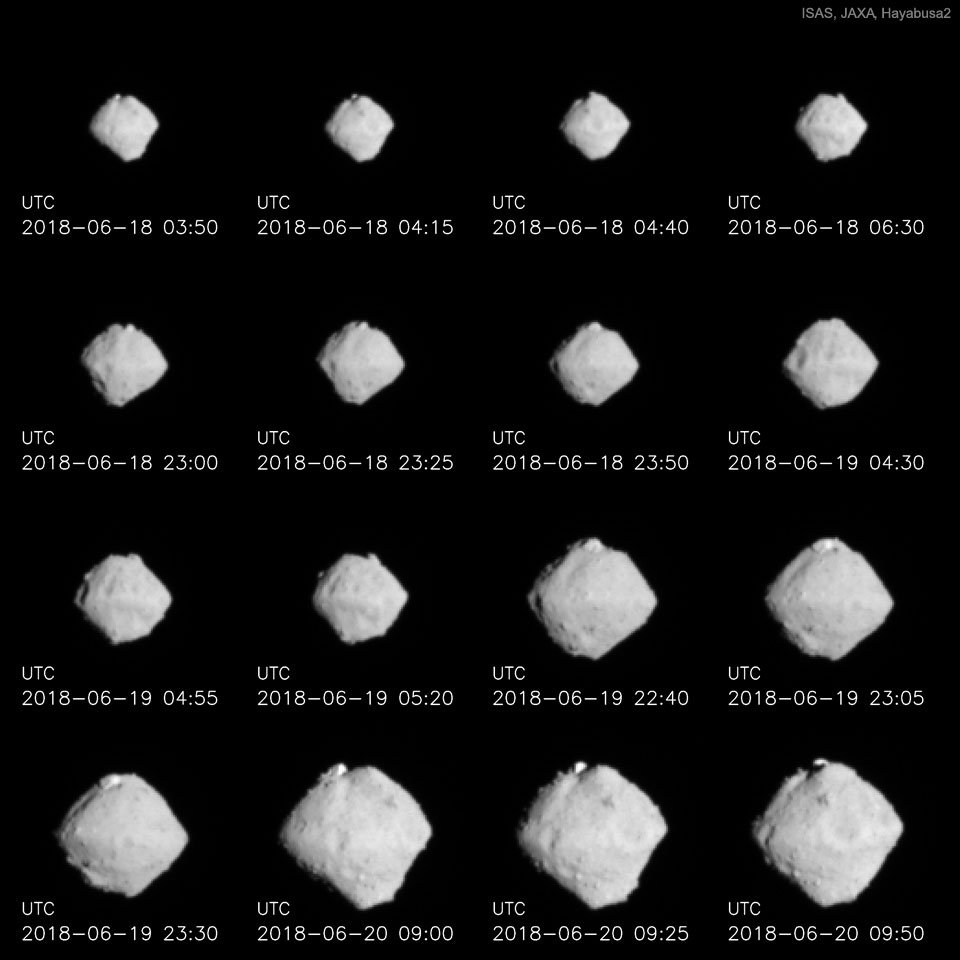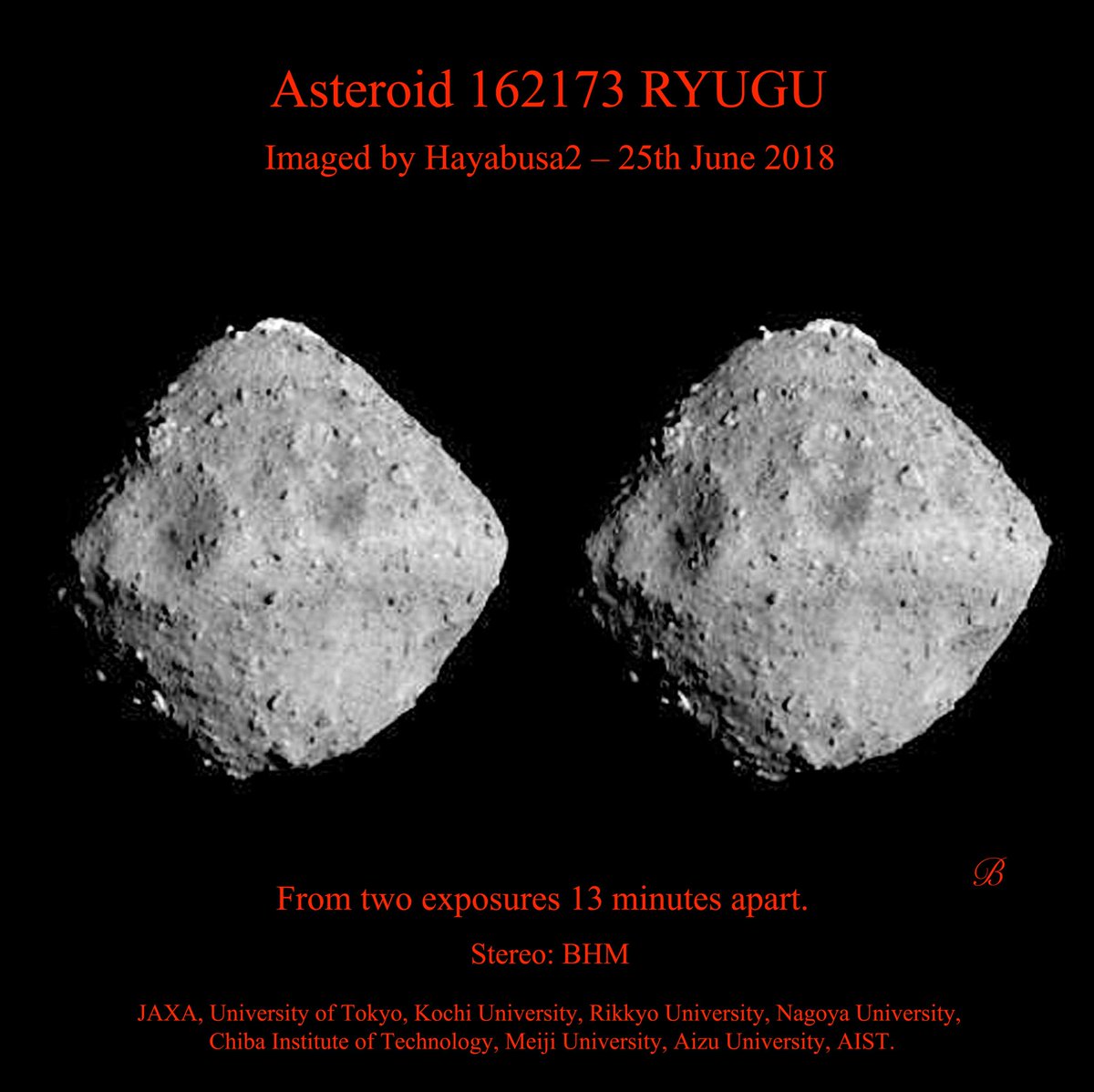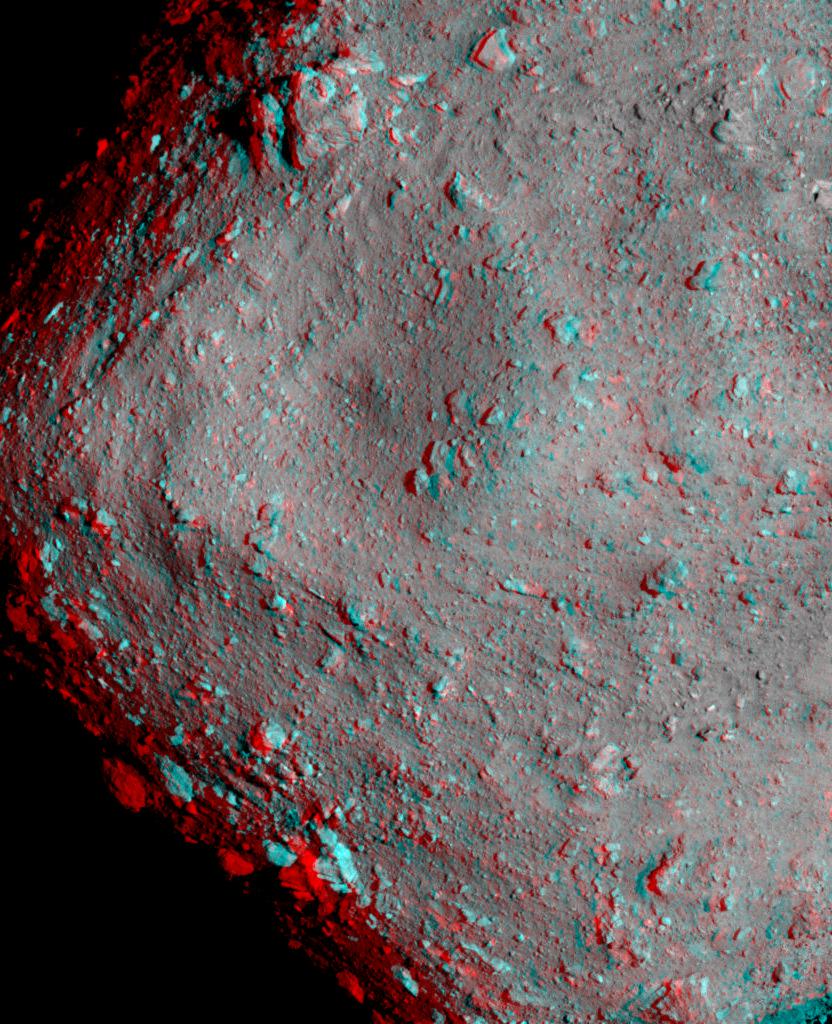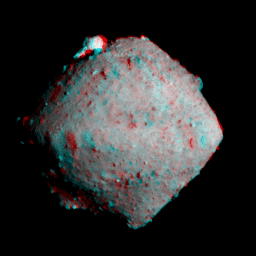How did I miss this!
https://apod.nasa.gov/apod/ap180625.html
Hayabusa2 to land on Asteroid Ryugu, take a sample and return the sample to Earth. If all goes to plan, this will be the first significant sample return to Earth from any object further than the Moon.
Also, if anyone had told me yesterday that an asteroid is a perfect square shape I’d be ROFL.
It’s 162173 Ryugu (Dragon’s Castle), and Japan’s robotic Hayabusa2 mission is now arriving at this near-Earth asteroid. Ambitious Hayabusa2 is carrying an armada of separable probes, including two impactors, four small close-proximity hoverers, three small surface hoppers, and the Mobile Asteroid Surface Scout (MASCOT) which will land, study, and move around on Ryugu’s surface. Most of these are equipped with cameras. Moreover, Hayabusa2 itself is scheduled to collect surface samples and return these samples to Earth for a detailed analysis near the end of 2020. Previously, what was known about asteroid Ryugu was its orbit, that it spans about one kilometer, and that it has a dark surface that reflects unusual colors.
How many spacecraft is in that one package? Let’s add it up, 2+4+3+1+1 = 11 separate spacecraft. The Japanese are not doing things by halves this time.
What’s the schedule?
Hayabusa2 is expected to arrive in July 2018, survey the asteroid for a year and a half, depart in December 2019, and return to Earth in December 2020.











